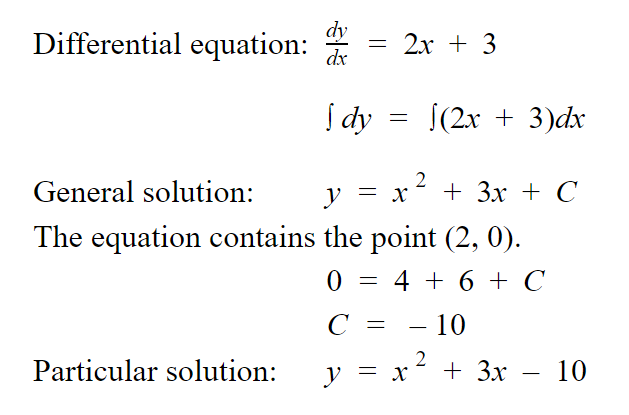

#DIFFERENTIAL CALCULUS FORMULAS FOR 11TH SERIES#
In calculus, we use the fundamental notions of convergence of infinite sequences and infinite series to a well-defined limit. Integral Calculus deals mainly with the accumulation of quantities and the areas under and between curves. As well, it can be used to measure the rate of change in speed of a vehicle travelling different miles or kilometers at given hours. In the same way, the statistics related to the growth of a business entity can be compared by analyzing their profit and loss using Differential Calculus. This helps to study the Weather Conditions of different places and compare them with one another later on.

The rate of change can be studied considering its quantity using Differential Calculus.įor Eg: In our day-to-day life, the method of Differential Calculus can be used to scrutinize the change in rising and fall of temperature of a given place and at a given point of time. It can be used to study and examine the trend of a given graph and highlight its maximum and minimum values of curve points. Differential calculus formulas deal with the rates of change and slopes of curves. On the other hand, definite integral functions consist of a series of functions that are constant in nature.įundamental Theorem: The fundamental theorem of Calculus refers to the relationship between and the derivatives and their integrals.ĭifferential calculus and integral calculus are the two major branches of calculus. Indefinite integrals are denoted by “f” as they represent a number of functions that are non-constant in nature. There are two types of integrals studied on a general basis namely Indefinite Integral and Definite Integral. Integration refers to the idea of deriving the value of an integral. In simple words, it is a study of the internal properties of a given function and its application in different fields. This particular concept is discussed more in detail further. Integral Calculus: Integral Calculus is another branch of Calculus along with Differential Calculus. The values of “dx” and “dy” are taken as assumptions to compute the further calculation of any given function. Leibniz Notation utilises the symbols of “dx” and “dy” to find the exact value of derivatives. Leibniz Notation: The term Leibniz Notation is coined after the great Mathematician and German Philosopher Gottfried Wilhelm Leibniz. Derivatives help in producing different functions and their output usually by squaring the values of the given digits. The process of deriving a derivation out of a function is termed Differentiation. The concept of Calculus formulas was developed at first to compute such small values and thus, it can manipulate certain limits and principles for infinitesimals.ĭifferential Calculus: Differential Calculus is one of the branches of calculus which is discussed further in detail. In other words, numbers that are less in value compared to a positive real number are called Infinitesimals. Limits and Infinitesimals: Infinitesimals refer to extremely small digit numbers such as values between 0 and 1.

In other words, Calculus is a significant tool for measuring the tendency of fluctuations considering the nature of an object. Apart from this, Calculus was used as a means of computation in various other fields also.įor Eg: To gain a better understanding of the movement of a car about its speed at different intervals and time taken for travelling, Calculus can be used for easy computation. During the early Latin times, the idea of Calculus was derived from its original meaning “small stones” as means of computing a calculation of travelling distance or measuring and analyzing the movement of certain objects like stars from one place to another with their space covered in real-time. Calculus is known to be the branch of mathematics, that deals in the study rate of change and its application in solving equations.


 0 kommentar(er)
0 kommentar(er)
